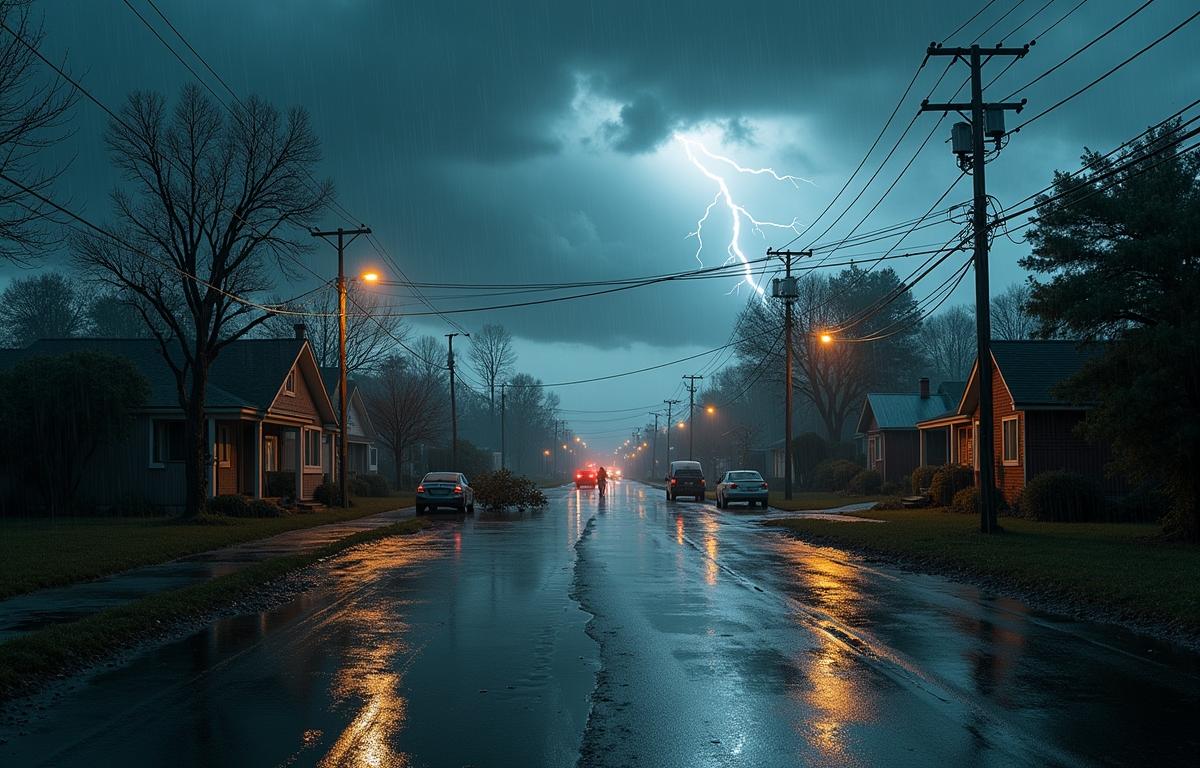
Common Weather Events That Trigger Power Outages
Our routines are often disrupted by power outages caused by certain weather events. Think about those moments when heavy rainfall, strong winds, or scorching heat waves suddenly leave entire neighborhoods without electricity. Power outages are more than an inconvenience; they can affect public safety, economic activity, and overall well-being. By examining different factors behind these disruptions, homeowners and businesses alike can be better prepared and more proactive.
The Role of Extreme Storms in Power Grid Resilience
Extreme storms, such as hurricanes or tropical cyclones, are known for their intense winds and torrential rain. When these powerful systems make landfall, they can damage utility poles, topple trees, and tear apart overhead cables. These disruptions cause widespread blackouts that can last anywhere from hours to weeks.
Rugged coastal areas are often most vulnerable because they endure the strongest gusts. However, inland regions are not always spared. In many cases, older power infrastructure struggles to withstand the force of extreme storms, highlighting the ongoing need to modernize equipment.
High Winds and Fallen Trees
High winds often trigger a chain reaction leading to downed power lines. Trees with weak root systems can blow over or crack, crushing poles and cables in their path. Once this damage occurs, utility crews focus on clearing debris before they can safely restore electricity.
Heavy Rain and Flooding Effects
Prolonged periods of heavy rainfall can weaken the ground beneath utility poles, leaving them susceptible to shifting or collapsing. Flooded roads also complicate power grid resiliency, making it difficult for repair teams to access the most damaged sites. Standing water can seep into underground transformers, causing short circuits and equipment failure.
Areas prone to flash floods stand a higher chance of experiencing infrastructure breakdowns. When floodwaters exceed critical levels, substations and switchyards are often forced offline to protect vital equipment. That downtime can stretch into days, depending on how fast the water recedes and how much restoration work is required.
Blizzards and Ice Storms
Fierce winter conditions place extraordinary stress on overhead lines and transmission towers. A single ice storm can coat power lines with heavy layers of ice, increasing their weight significantly. Even robust cables can snap under these conditions, and the resulting outages can blanket entire regions in darkness.
When roads are buried under snowdrifts, repair crews face major obstacles. These harsh conditions slow down the restoration process, leaving homes and businesses in the cold for extended periods. Storm preparedness tactics, such as trimming branches near power lines and insulating exposed equipment, become crucial measures in minimizing weather-related damage.
Freezing Rain’s Hidden Hazards
While snowstorms are challenging enough, freezing rain poses an especially dangerous threat. Thin layers of ice accumulate rapidly on every exposed surface, often dragging tree limbs onto nearby cables. Utility workers must move carefully to avoid slipping on the ice, adding to the complexity of restoring electricity.
Heat Waves and Wildfires
Scorching temperatures can overwork the electrical grid as households and offices simultaneously increase air conditioning use. Excessive demand can force substation components to run at their limits, sometimes causing them to overheat. Circuits can trip when they detect overloaded lines, resulting in rolling blackouts.
In regions prone to wildfires, the threat escalates further. Blistering heat and dry conditions transform brush and forests into tinderboxes. Strong winds quickly spread flames that can incinerate wooden poles and melt plastic or rubber insulation on lines. Preventive shutdowns also happen in wildfire-prone areas. Power companies sometimes switch off electricity to reduce the risk of sparks from downed power lines starting new blazes.
Reducing Wildfire Damage
Communities in dry regions often adopt strategies to protect valuable infrastructure. Crews clear vegetation around lines, and many utilities consider upgrading to fire-resistant materials. Although these investments can reduce the chance of large-scale blackouts, it’s impossible to eliminate all risks in such extreme climates.
Tornadoes and Lightning Strikes
Tornadoes present a sudden blow to power distribution networks. In a matter of minutes, they can uproot trees, rip apart substations, and scatter debris across a wide zone. The rotating winds cause sporadic yet intense outages, making recovery unpredictable.
Lightning adds its own punch to summertime storms, delivering powerful electrical discharges. Power lines act like lightning rods, which can either safely direct energy to the ground or lead to system failures. Surge arresters and grounding mechanisms help contain the damage, but they aren’t foolproof.
Protecting Lines from Lightning Surges
Utilities employ specialized devices to prevent massive voltage spikes from traveling through the grid. These gadgets redirect lightning strikes away from sensitive equipment, dispersing them into the ground. Upgrades like improved insulators can significantly curb downtime, but financially large investments are often needed to equip entire service territories.
Windy Plains and Downed Power Lines
In certain regions, constant gusts can cause power lines to sway and clash against each other. That friction can wear down insulation over time, leaving cables exposed. Eventually, direct contact between lines or a ground fault can topple parts of the grid.
This problem is magnified in wide-open plains where there are fewer natural windbreaks. Overhead lines experience more stress, and utility companies may need to install stronger poles or bury lines underground. Both measures come with high costs, so decisions often hinge on available budgets and local regulations.
Adapting to Unpredictable Weather Patterns
Climate change appears to be intensifying heat waves, hurricanes, and other events. Shifting weather patterns mean power grids must handle more volatile conditions than ever before. Sudden temperature swings can create mechanical strain on wires and may lead to unexpected surges in electricity demand.
Communities often rely on a mix of upgraded infrastructure and better disaster plans to reduce the time it takes to restore service. Proposals to bury lines in vulnerable areas are gaining traction, since underground cables avoid many overhead hazards. Still, this approach has downsides, including higher installation costs and potential water intrusion in flood-prone locations.
Smart Grid Advancements
Modernizing the power grid relies on integrating sensors and automated switches. These tools detect faults almost instantly, isolating affected lines to prevent widespread outages. When a weather event strikes, utilities can reroute electricity around damaged components, getting households back online faster.
Reliable data streams also guide repair crews by pinpointing the exact trouble spots. This eliminates guesswork, allowing teams to focus on specific locations rather than searching helplessly after a storm. In the long run, smart grid systems help power companies reduce the severity and duration of blackouts.
Practical Steps to Limit Downtime
Property owners can look for ways to safeguard their homes and businesses from the fallout of strong weather events. Some may invest in battery backup systems or a standby generator to keep essentials running. Home insulation improvements also help regulate indoor temperatures when HVAC systems lack power.
Tree trimming near power lines is an often overlooked but essential measure. Clearing dead or weak branches significantly reduces the risk of major damage during windy storms. Regular maintenance on wiring and outlets can ward off small electrical issues that might become worse during extreme conditions.
Coordination with Local Utilities
Many utility providers offer programs to help customers stay informed before and after severe storms. These alerts might involve automated text messages or calls outlining estimated repair times. In some cases, you can even learn about ongoing improvements in power grid resilience.
Staying in touch with local agencies also equips you with evacuation or shelter-in-place instructions if a large-scale event approaches. Access to real-time data allows communities to respond faster, preventing confusion and additional hazards when weather-related outages happen.
Looking Ahead to Evolving Challenges
While seasonal variations often determine which weather events dominate certain regions, no area is entirely safe from sudden disruptions. Power companies are under increasing pressure to plan ahead for storms, floods, and wildfires that can strike with minimal warning. Proactive measures like hardware upgrades and regular safety inspections remain essential parts of the puzzle.
As more individuals, businesses, and government agencies recognize the importance of power grid reliability, investments in technology and infrastructure should continue to grow. These upgrades won’t eliminate all outages, but they can reduce how long they last and how deeply they affect communities. In a world of changing climates and diverse geographical hazards, remaining flexible and prepared is key to minimizing the impact of weather events on our power systems.
